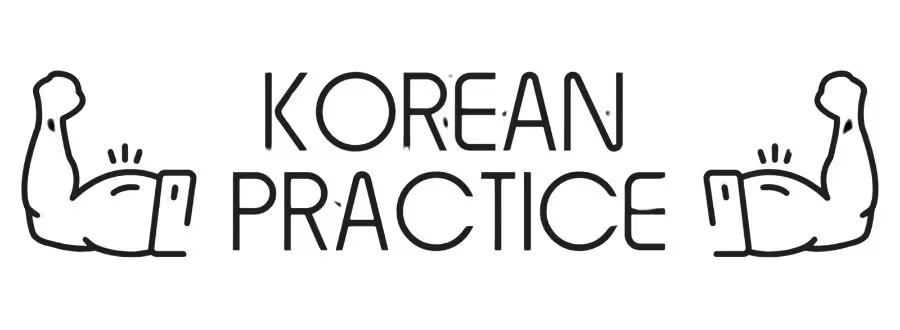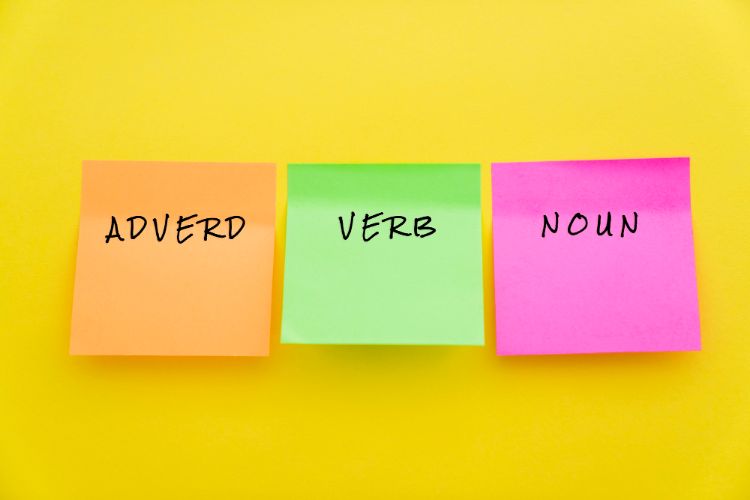Mastering essential Korean grammar can seem like a daunting task, but don’t let that discourage you! With a little patience and effort, you too can master Korean grammar.
This all-inclusive guide delves into the essential Korean grammar and offers clear, thorough explanations for key concepts.
Whether you’re a beginner just starting your Korean language journey or looking to enhance your existing skills, this Korean grammar guide is here to help.
The Importance of Essential Korean Grammar
The essential Korean grammar is a critical component of the language, and it’s essential to understand it if you want to communicate effectively in Korean.
The essential Korean grammar rules determine how words are put together to form sentences, and they also help to convey meaning and context.
By mastering the basics of Korean grammar, you’ll be able to express yourself more accurately and communicate more effectively with others.
1. The Korean Alphabet: Hangul
Before diving into the specifics of Korean grammar, it’s important to understand the Korean alphabet, known as Hangul.
Hangul consists of 14 consonants and 10 vowels, and it’s relatively easy to learn. With just a little practice, you’ll be able to read and write Korean words in no time.
Here are a few examples of the Korean alphabet, Hangul, in action:
- 가 (ga) – This is the first letter of the Korean alphabet and represents the sound “g”.
- 나 (na) – This letter represents the sound “n”.
- 다 (da) – This letter represents the sound “d”.
- 라 (ra) – This letter represents the sound “r”.
- 마 (ma) – This letter represents the sound “m”.
- 바 (ba) – This letter represents the sound “b”.
- 사 (sa) – This letter represents the sound “s”.
- 아 (a) – This letter represents the sound “a”.
- 자 (ja) – This letter represents the sound “j”.
- 차 (cha) – This letter represents the sound “ch”.
- 카 (ka) – This letter represents the sound “k”.
- 타 (ta) – This letter represents the sound “t”.
- 파 (pa) – This letter represents the sound “p”.
- 하 (ha) – This letter represents the sound “h”.
These are just a few examples of the Korean alphabet, Hangul. By learning the sounds and shapes of these letters, you’ll be well on your way to reading and writing in Korean!

Image by Freepik
2. Basic Sentence Structure
In Korean, the basic sentence structure is subject-object-verb (SOV), which is different from English’s subject-verb-object (SVO) structure.
For example, in English, you might say “I eat an apple,” but in Korean, it would be “I apple eat.” It’s essential to keep this sentence structure in mind as you start to form sentences in essential Korean grammar.
Here are a few examples of basic sentence structure in Korean: These are just a few examples of basic sentence structure in essential Korean grammar. By understanding these basic building blocks, you’ll be able to create more complex sentences and express yourself more effectively in the language.
Subject + Verb:
저는 먹습니다.
저는 (jeo-neun) 먹습니다 (meok-seum-ni-da).
저 (I; in a humble way) 는 (I’m going to talk about me) 먹 (to eat) 습니다 (I’m telling you formally).
I eat.
Subject + Object + Verb:
저는 사과를 먹습니다.
저는 (jeo-neun) 사과를 (sa-gwa-reul) 먹습니다 (meok-seum-ni-da).
저 (I; in a humble way) 는 (I’m going to talk about me) 사과 (an apple) 를 (my object is an apple) 먹 (to eat) 습니다 (I’m telling you formally).
I eat an apple.
Lit. I eat apple.
Subject + Adverb + Verb:
저는 빨리 달립니다.
저는 (jeo-neun) 빨리 (bbal-li) 달립니다 (dal-rim-nida).
저 (I; in a humble way) 는 (I’m going to talk about me) 빨리 (fast) 달리 (to run) ㅂ니다 (I’m telling you formally). ” * 달리 + ㅂ니다 = 달립니다
I run fast.
Subject + Adjective + Noun:
저는 행복한 사람입니다.
저는 (jeo-neun) 행복한 (haeng-bo-kan) 사람입니다 (sa-ram-im-ni-da).
저 (I; in a humble way) 는 (I’m going to talk about me) 행복한 (happy) 사람 (person) 입니다 (am; I’m telling you formally).
I am a happy person.
Lit. I am happy person.
Subject + Location + Verb:
저는 집에 갑니다.
저는 (jeo-neun) 집에 (ji-be) 갑니다 (gam-ni-da).
저 (I; in a humble way) 는 (I’m going to talk about me) 집 (home) 에 (to) 가 (to go) ㅂ니다 (I’m telling you formally). * 가 + ㅂ니다 = 갑니다
I go home.
Lit. I go to home.

3. Nouns and Pronouns
Nouns and pronouns are an essential component of Korean grammar, and they play a critical role in sentence structure.
In Korean, nouns can take on different forms, depending on their role in the sentence.
For example, when a noun is the subject of a sentence, it takes a different form than when it’s the object of the sentence.
Pronouns in Korean are used to refer to the speaker, the listener, or a third person.
There are several different types of pronouns in Korean, including formal and informal, singular and plural, and more. It’s essential to understand the different types of pronouns and when to use them correctly.
Here are a few examples of nouns and pronouns in Korean:
- Nouns: 사과 (sa-gwa) – “apple” 강아지 (gang-a-ji) – “puppy” 집 (jib) – “house” 차 (cha) – “car”
- Pronouns: 저 (jeo) – “I” 나 (na) – “I” 그 (geu) – “he” or “she” 우리 (uri) – “we” 너 (neo) – “you” 그들 (geu-deul) – “they”
These are just a few examples of nouns and pronouns in Korean. By learning these basic building blocks, you’ll be able to express yourself more effectively in the language.
4. Adjectives and Adverbs
Adjectives and adverbs are used to describe nouns and verbs, respectively.
In Korean, adjectives can be used to describe the characteristics of a noun, such as its size, shape, or color.
Adverbs, on the other hand, can be used to describe the manner in which a verb is performed.
Here are a few examples of adjectives and adverbs in Korean:
- Adjectives: 행복한 (haeng-bok-han) – “happy” 예쁜 (ye-ppeun) – “pretty” 맛있는 (ma-sit-neun) – “delicious” 작은 (ja-geun) – “small” 큰 (keun) – “big”
- Adverbs: 빨리 (ppal-li) – “fast” 천천히 (cheon-cheon-hi) – “slowly” 잘 (jal) – “well” 아주 (a-ju) – “very” 조금 (jo-geum) – “a little”
These are just a few examples of adjectives and adverbs in Korean. By learning these building blocks, you’ll be able to add more descriptive detail to your sentences and express yourself more effectively in essential Korean grammar.
5. Verbs
Verbs are the action words in a sentence, and they play a critical role in conveying meaning. In Korean, verbs can take on different forms, depending on tense and aspect. It’s important to understand the different verb forms and when to use them correctly.
Here are a few examples of verbs in Korean:
- 자다 (ja-da) – “to sleep”
- 먹다 (meok-da) – “to eat”
- 쓰다 (sseu-da) – “to write”
- 살다 (sal-da) – “to live”
- 마시다 (ma-si-da) – “to drink”
- 가다 (ga-da) – “to go”
- 읽다 (ik-da) – “to read”
- 사다 (sa-da) – “to buy”
- 보다 (bo-da) – “to see”
- 좋아하다 (jo-a-ha-da) – “to like”
These are just a few examples of verbs in Korean. By learning these action words, you’ll be able to express actions and experiences in your sentences and communicate more effectively in essential Korean grammar.
6. Particles
Particles are small words that are used to indicate the relationships between words and to show grammatical relationships in a sentence.
In Korean, there are several different types of particles, including subject markers, object markers, and more. Understanding the role of particles in essential Korean grammar is essential to communicating effectively.
Here are a few examples of particles in Korean:
- 의 (eui) – “of, belonging to” Example: 저의 친구 (jeo-eui chin-gu) – “my friend”
- 에 (e) – “at, in” Example: 대학에 가다 (dae-ha-ge ga-da) – “to go to university”
- 에서 (e-seo) – “from, at (a location)” Example: 집에서 나가다 (ji-be-seo na-ga-da) – “to go out from home”
- 와/과 (wa/gwa) – “and” Example: 고기와 야채 (go-gi-wa ya-chae) – “meat and vegetables”
- 이/가 (i/ga) – “subject marker” Example: 제가 학생입니다 (je-ga hak-saeng-im-ni-da) – “I am a student”
- 를/을 (reul/eul) – “object marker” Example: 저는 사과를 먹습니다 (jeo-neun sa-gwa-reul meok-seum-ni-da) – “I eat an apple”
- 은/는 (eun/neun) – “topic marker” Example: 저는 공부합니다 (jeo-neun gong-bu-ham-ni-da) – “As for me, I study”
- 도 (do) – “also, too” Example: 친구도 왔습니다 (chin-gu-do wah-seum-ni-da) – “A friend also came”
- 만 (man) – “only” Example: 저는 집에서만 살아요 (jeo-neun jib-e-seo-man sal-a-yo) – “I only live at home”
These are just a few more examples of particles in Korean. By learning these particles, you’ll be able to more accurately express the relationships between words in your sentences and convey your intended meaning.
7. Numbers and Time Expressions
Numbers and time expressions are an essential part of Korean grammar, and they’re used to express quantities and durations.
In Korean, there are different ways to express numbers, depending on the context. It’s important to understand the different number systems and how to use them correctly.
Here are a few examples of numbers and time expressions in Korean:
Numbers:
- 하나 (hana) – one
- 둘 (dul) – two
- 셋 (set) – three
- 넷 (net) – four
- 다섯 (da-seot) – five
- 여섯 (yeo-seot) – six
- 일곱 (il-gop) – seven
- 여덟 (yeo-deol) – eight
- 아홉 (a-hop) – nine
- 열 (yeol) – ten
- 열하나 (yeol-ha-na) – eleven
- 열둘 (yeol-dul) – twelve
- 열셋 (yeol-set) – thirteen
- 열넷 (yeol-net) – fourteen
- 열다섯 (yeol-da-seot) – fifteen
Time Expressions:
- 오전 (o-jeon) – morning
- 오후 (o-hu) – afternoon
- 시 (si) – hour
- 분 (bun) – minute
- 초 (cho) – second
Example: 오전 11시 30분 (o-jeon 11-si 30-bun) – “11:30 AM”
By learning these basic numbers and time expressions in Korean, you’ll be able to tell time and express numbers in conversations. This will help you communicate more effectively and accurately.
Conclusion
The essential Korean grammar may seem challenging at first, but with a little patience and practice, anyone can master it.
By understanding the basics of Korean grammar, including sentence structure, nouns and pronouns, adjectives and adverbs, verbs, particles, and numbers and time expressions, you’ll be well on your way to communicating effectively in Korean.







